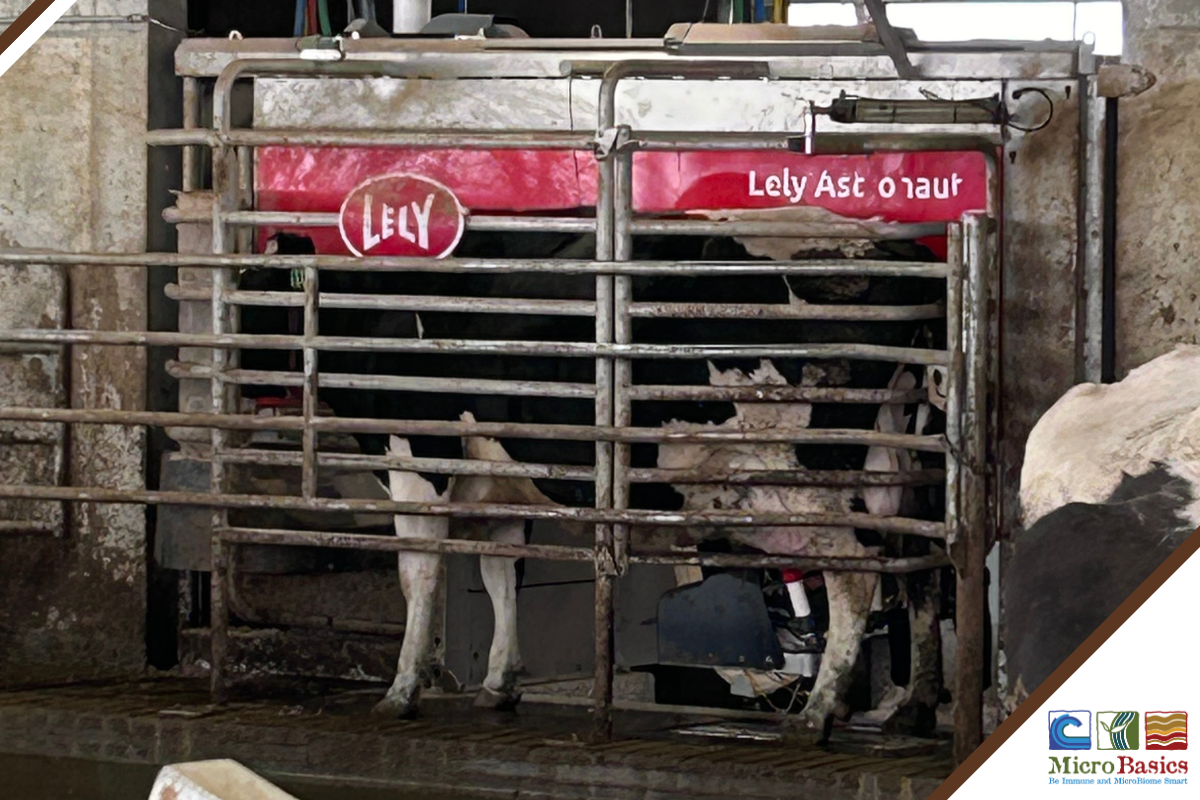I recently had the opportunity to tour a new robot dairy in my neighborhood. Strangely enough, it is the first robot dairy I have ever been to! I was very impressed by the calm environment and useful information collected by the robot system.
Labor shortages in the agricultural industry have led farmers to utilize technology as much as possible to decrease the number of employees needed. Robotic milking machines are one example of these technologies at work.
How the Robot Works
Cows wearing an RFID collar enter the milking stall voluntarily to be milked. The tag attached to the collar communicates with the milking robot. If it is time for the cow to be milked, she will get a grain treat and the robot will milk her. The robot determines how much grain each cow gets based off how much milk she has been producing.
Some cows are frequent visitors to the robot and may enter the milking stall several times per day hoping for a treat. If it is not time for the cow to be milked, then she doesn’t get a treat and the robot will not milk her.

Milking Process
The robot cleans and preps teats using a rotating brush, then a laser helps to align the milking machine to the cow’s teats. The robot can measure the amount of milk that comes out of each quarter of the udder, and using data from previous milkings will predict how much milk she should give during the milking.

The robot can detect mastitis using milk conductivity and will flag cows that need medical treatment. Post milking these animals will be directed to a special holding area so they can receive the attention that is needed.
Feed and Manure Management
In addition to the pelleted grain that is fed to the cow while she is being milked, the animals still receive a PMR (partial mixed ration). This ration is delivered by a regular feed wagon but is routinely pushed up by a robot to keep feed always where the animals can reach it.
Similarly, robot “vacuums” roam the alleys sucking up manure. These robots dump the sludge down a drain where it can exit the facility and be separated. The dry part of the separated manure is reused as bedding over the free stall mattresses.

Impact on the Cows
Robot housing is a very low stress environment for cows. They choose when to be milked and most of their time is spent in rest and digest mode. During the tour many of the cows came up to people passing by their pen, some curious, and some wanting to be scratched. In one instance another dairyman on the tour asked half-jokingly, “What are these all show cows from the fair?”
The reply of owner Danny Turner was, “No, they are just robot cows. They are never pushed anywhere, and humans aren’t something they are in the habit of moving away from.”

Moving from Conventional to Robot
Turner Farms started with one conventional dairy and had the opportunity to expand and add the robot facility when they purchased a neighboring dairy. The addition of the robot dairy was something that Danny’s son Cameron was drawn to. When asked if he had ever envisioned himself coming back and running the dairy he replied, “No, growing up I liked the farm. I still like the farm, but I have come to like the steady pace of the dairy, and the weekly routine. If we were to stay with just our conventional dairy it would not be as enticing to me, but I toured a robot dairy about 6 years ago and was drawn to the idea. I was impressed with the technology and excited to make it work for us.”
Thank you, Danny and Cameron, for inviting so many out to tour your new facility! It is always helpful to observe and learn from others!
Written by: Mariah Gull, M.S.

